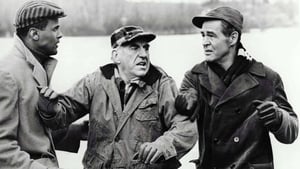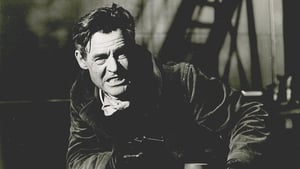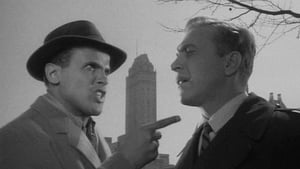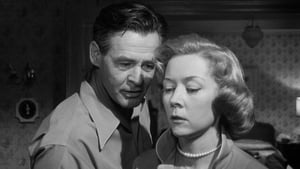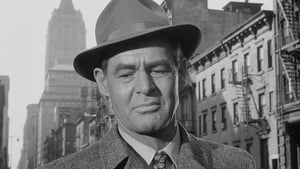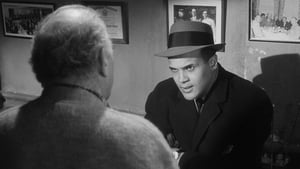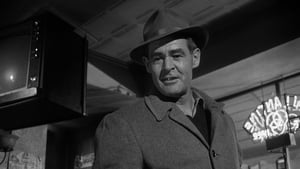Contact: [email protected]
Video Sources 0 Views
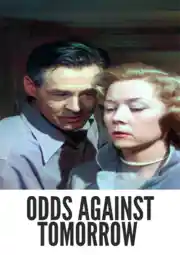
Synopsis
[ez-toc]
Introduction
In the ever-evolving landscape of cinema, the delicate balance between preserving the authenticity of old movies and adapting them to captivate modern audiences has been a perpetual challenge. Colorization, a controversial process that adds a vivid layer to classic black and white films, has sparked debates within the film community. This article delves into the colorized version of the 1959 noir masterpiece, “Odds Against Tomorrow Colorized,” exploring its making, the significance of its soundtrack, and the timeless themes that continue to resonate today.
Read Media File Transfer Agreement: Terms and Conditions
Read FAQ
The Making of “Odds Against Tomorrow Colorized”
The original 1959 film, directed by Robert Wise and penned by Abraham Polonsky, stands as a noir classic. “Odds Against Tomorrow Colorized” features the notable involvement of Harry Belafonte, whose participation marked a turning point in racial representation in cinema. The film follows a fallen former cop and a hardened ex-con as they join forces for a high-stakes bank job, delving into personal struggles and the complexities of their criminal partnership. This black and white gem laid the foundation for the colorized version, adding a fresh layer to its visual allure.
Directed by Robert Wise, the original 1959 “Odds Against Tomorrow Colorized” showcased the epitome of film noir aesthetics. Abraham Polonsky’s screenplay added a layer of complexity to the narrative, setting the stage for an intense exploration of human flaws and societal issues. The film marked a significant departure from conventional genre norms, presenting a narrative that was both thrilling and socially relevant.
Harry Belafonte’s involvement in the project was groundbreaking, challenging the prevailing racial stereotypes in Hollywood. Cast as Johnny Ingram, a Black ex-convict, Belafonte’s portrayal was a departure from the stereotypical roles assigned to Black actors at the time. This move towards more authentic representation was a pivotal moment in the history of cinema, contributing to the ongoing conversation about diversity and inclusion.
Bringing Color to a Noir Masterpiece
The colorization process, often met with skepticism, aimed to rejuvenate “Odds Against Tomorrow Colorized” for a new generation. Carefully balancing the preservation of the original cinematography with the infusion of vibrant hues posed a significant challenge. The restoration team employed cutting-edge techniques to ensure the colorized version retained the film’s essence while introducing a contemporary visual appeal. The result is a stunning marriage of classic noir aesthetics with the vibrancy of color, breathing new life into this cinematic treasure.
The transition from black and white to color was not without its challenges. The restoration team faced the daunting task of maintaining the integrity of the original cinematography while introducing color in a way that enhanced rather than detracted from the viewing experience. This delicate process involved meticulous attention to detail, utilizing state-of-the-art technology to bring a new visual dimension to the film.
The decision to colorize a classic film is often met with resistance from purists who argue that tampering with the original artistic vision compromises the authenticity of the work. However, in the case of “Odds Against Tomorrow Colorized,” the colorization process was approached with a deep respect for the source material. The intention was not to overshadow the black and white version but to offer audiences an alternative perspective, inviting them to experience the film in a new light.
The Significance of the Soundtrack: John Lewis and the Modern Jazz Quartet
Integral to both the original and colorized versions of “Odds Against Tomorrow Colorized” is the iconic jazz score by John Lewis, performed by the Modern Jazz Quartet. Lewis’s compositions elevate the film’s atmosphere, creating a unique sonic landscape that complements the tension and drama. The soundtrack’s timeless allure showcases the enduring impact of music in film, emphasizing its ability to transcend time and enhance storytelling.
John Lewis, a luminary in the world of jazz, brought a level of sophistication to the film’s musical dimension. His collaboration with the Modern Jazz Quartet resulted in a score that seamlessly blended with the noir aesthetics, enhancing the emotional depth of the narrative. The haunting melodies and intricate arrangements became an integral part of the film’s identity, contributing to its lasting impact on audiences.
The marriage of music and film has always been a powerful storytelling tool, and “Odds Against Tomorrow Colorized” stands as a prime example of this synergy. The soundtrack not only underscored the emotional nuances of the characters but also added a layer of complexity to the overall viewing experience. Whether in the original black and white format or the colorized rendition, John Lewis’s score remains a testament to the timeless marriage of sound and image.
Exploring the Themes and Characters of “Odds Against Tomorrow Colorized”
At its core, “Odds Against Tomorrow Colorized” remains a character-driven narrative exploring the consequences of desperate choices. The film masterfully weaves a tale of redemption, betrayal, and racial tension against the backdrop of a high-stakes heist. Through a nuanced portrayal of diverse characters, the film addresses societal issues, providing a snapshot of the racial challenges prevalent in its era. The complexities of the characters and the exploration of racial dynamics contribute to the film’s enduring relevance.
The narrative unfolds as David Burke, a fallen former cop played by Ed Begley, and Johnny Ingram, portrayed by Harry Belafonte, team up for a bank heist. Their partnership, fraught with personal struggles and racial tensions, becomes a microcosm of the societal challenges of the time. The film does not shy away from addressing the racial prejudices that permeated society in the late 1950s, using its characters as a lens to explore the complexities of human relationships.
Ed Begley’s portrayal of David Burke brings a sense of tragic vulnerability to the character. As a disgraced ex-cop, Burke grapples with personal demons while navigating a morally ambiguous path. In contrast, Harry Belafonte’s Johnny Ingram challenges stereotypes, presenting a character with depth and resilience. The dynamic between the two characters adds layers to the narrative, transcending the typical tropes of the genre.
The racial tension depicted in “Odds Against Tomorrow Colorized” remains a poignant and relevant theme. The film’s exploration of prejudice, mistrust, and the impact of societal expectations on individuals resonates with contemporary audiences. As discussions about systemic racism persist, “Odds Against Tomorrow” serves as a reminder of the enduring power of cinema to engage with complex social issues.
The Controversy Surrounding Colorized Movies
The colorization of classic films has long been a contentious issue in the preservation of cinematic history. Advocates argue that adding color breathes new life into old movies, making them more accessible to contemporary audiences. Detractors, however, insist that the authenticity and artistic vision of the original black and white format should be preserved. The debate surrounding colorized movies remains a testament to the ongoing struggle between nostalgia and innovation in the film industry.
The controversy surrounding colorized movies revolves around the question of whether altering the visual presentation of a film compromises its artistic integrity. Purists argue that the original format chosen by the filmmakers should be respected and preserved. They contend that the intended mood, atmosphere, and visual language of a film are intricately tied to the director’s choice of color or lack thereof.
On the other side of the debate are those who see colorization as a way to breathe new life into classic films, making them more appealing to contemporary audiences. This perspective argues that colorization can enhance the viewing experience, particularly for younger generations who may find black and white films less engaging. By updating the visual aesthetics, colorization aims to bridge the gap between the past and the present, inviting a new audience to appreciate cinematic classics.
In the case of “Odds Against Tomorrow Colorized,” the decision to create a colorized version was undoubtedly met with skepticism. However, the careful approach to the colorization process, preserving the essence of the original while introducing a fresh visual dimension, serves as a middle ground in the ongoing debate. The controversy surrounding colorized movies remains a nuanced conversation within the broader context of film preservation and adaptation for contemporary audiences.
The Legacy of “Odds Against Tomorrow Colorized” and Its Relevance Today
“Odds Against Tomorrow Colorized” stands as a trailblazer that defied genre conventions, addressing social issues with a raw and unflinching lens. Its legacy endures not only for its cinematic achievements but also for its contribution to discussions on race, inequality, and justice. The film’s themes resonate in today’s world, underscoring the importance of confronting systemic racism and societal challenges. “Odds Against Tomorrow Colorized” serves as a timeless reminder that the power of cinema extends beyond entertainment, acting as a mirror reflecting societal complexities.
The enduring legacy of “Odds Against Tomorrow Colorized” lies in its ability to transcend the temporal boundaries of its initial release. The film, although rooted in the social context of the late 1950s, continues to resonate with audiences grappling with contemporary issues. The exploration of racial tensions, the consequences of criminal endeavors, and the intricacies of human relationships remain as relevant today as they were when the film first graced the silver screen.
The groundbreaking nature of Harry Belafonte’s casting in a leading role reverberates through the decades, contributing to ongoing conversations about representation in the film industry. “Odds Against Tomorrow Colorized” challenged the status quo, paving the way for more diverse narratives and authentic portrayals on screen. As discussions about inclusivity in Hollywood persist, the film’s legacy serves as a testament to the potential of cinema to drive societal change.
Preserving Film History: Balancing Restoration with Innovation
As audiences grapple with the decision to embrace colorized versions of old films, it becomes imperative to appreciate the delicate balance between restoration and innovation. While purists may advocate for the preservation of films in their original black and white format, the colorized renditions offer a unique viewing experience, attracting new audiences to cinematic classics. Embracing both versions ensures a comprehensive understanding of a film’s evolution and contributes to the broader initiative of preserving the rich tapestry of film history.
Preserving film history requires a nuanced approach that acknowledges the evolving nature of audience preferences and technological advancements. The debate between purists and advocates of colorization underscores the need for a middle ground that respects the artistic intent of filmmakers while acknowledging the potential benefits of adapting classic films for contemporary viewers.
The restoration and colorization of films like “Odds Against Tomorrow Colorized” contribute to a dynamic conversation about the intersection of tradition and progress in cinema. By embracing both the original black and white versions and their colorized counterparts, audiences gain a more comprehensive understanding of the film’s impact and evolution. This dual appreciation fosters a deeper connection to the history of cinema, allowing for a more inclusive and diverse exploration of classic works.
In conclusion, “Odds Against Tomorrow Colorized” in its colorized form not only breathes new life into a noir masterpiece but also reignites crucial conversations about the intersection of tradition and progress in the world of cinema. As audiences navigate the timeless themes embedded in this film, the colorized version serves as a bridge between the past and the present, inviting both seasoned cinephiles and a new generation to appreciate the artistry and social commentary of this cinematic gem. The legacy of “Odds Against Tomorrow” endures, not as a relic frozen in time, but as a living testament to the power of film to transcend generations and continue shaping conversations about the complexities of the human experience.




